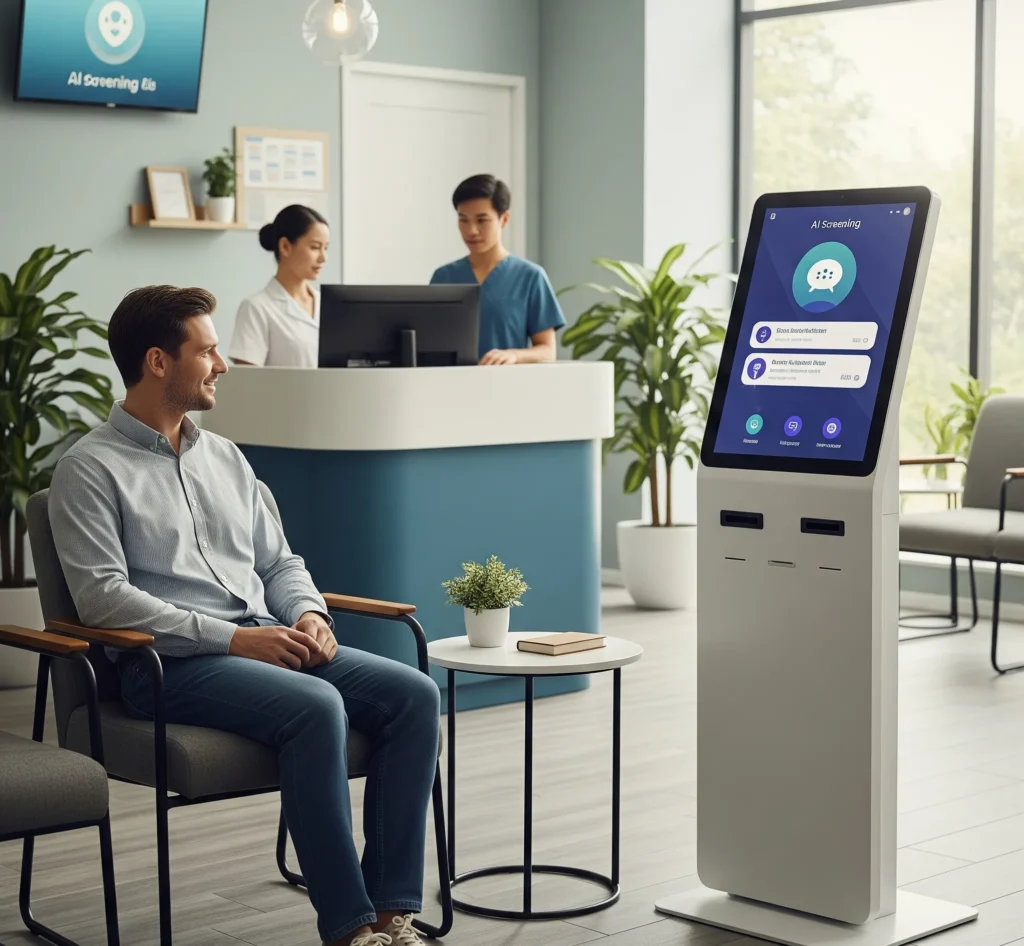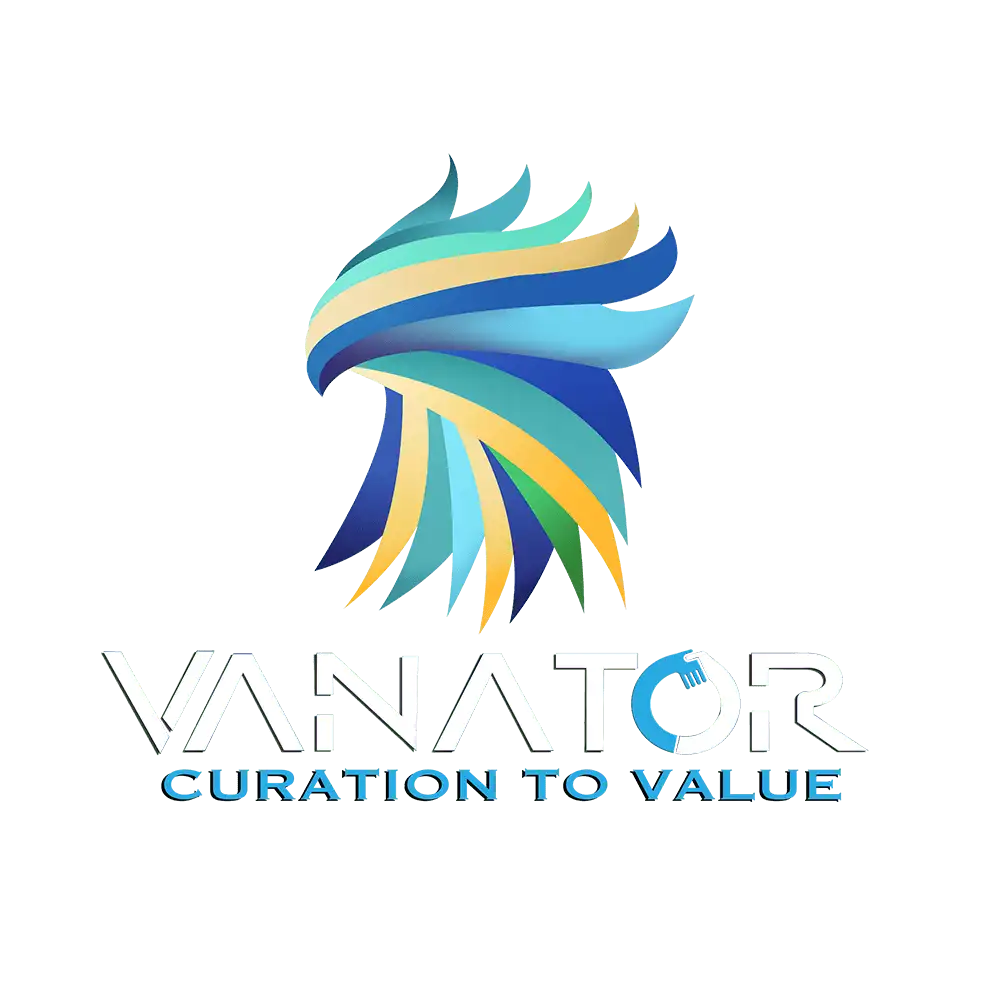Recruitment techniques to scale your healthcare team in 2025 by leveraging cutting-edge AI-powered recruitment, remote-first approaches, and robust employer branding. Enhance efficiency, diversity, and retention while ensuring compliance and innovation in a competitive hiring landscape.
- Home
- Blogs
- Scaling Your Healthcare Team in 2025: Recruitment Techniques That Work
Scaling Your Healthcare Team in 2025: Recruitment Techniques That Work
Recruitment techniques to scale your healthcare team in 2025 by leveraging cutting-edge AI-powered recruitment, remote-first approaches, and robust employer branding. Enhance efficiency, diversity, and retention while ensuring compliance and innovation in a competitive hiring landscape.
Key Takeaways:
Embrace AI-Powered Recruitment & Screening
Go Remote-First & Hybrid-Friendly
Double Down on Employer Branding & EVP
Target DEI with Intentionality
Enhance Candidate Experience with Hyper-Personalization
Build a Talent Pipeline & Internal Mobility
Predictive Analytics & Workforce Planning
Offer Competitive Compensation & Flexible Benefits
Combat Turnover Through Strong Retention Strategies
Plug Gaps with Travel, Gig & Rural Staffing
Adopt Healthcare-Specific ATS & Workforce Tech
Foster a Culture of Continuous Learning
Measure ROI: Data-Driven Recruitment
Stay Compliant & Secure in Tech Use
Future-Proof with Innovation

Embrace AI-Powered Recruitment & Screening
- Why it matters: Healthcare hiring cycles are notoriously long—up to 5 months for specialized roles. AI helps you screen and qualify candidates faster, saving tens of working hours per hire.
- Candidate matching & resume parsing: Modern ATS platforms use machine learning to surface best-fit resumes based on skills, clinical credentials, and licensures.
- Bias-reducing screening: AI can strip demographic info from applications and flag gendered or prejudiced language in job ads.
- Chatbots and automated communication: Tools like Mya or ChatGPT plug into your ATS workflow—answer candidate FAQs, schedule interviews, and boost engagement by 50%.
Best practice: Integrate an AI-driven ATS that supports resume anonymization, resume-to-job-fit scoring, and auto-scheduling. Ensure compliance with healthcare regulations (e.g., HIPAA for patient-facing roles) and test regularly for bias.

Go Remote-First & Hybrid-Friendly
Why it matters: Telehealth, remote monitoring, and cross-site staffing are booming. Candidates now expect flexibility—even in healthcare.
- Telehealth roles: Nurse practitioners or allied health staff comfortable in virtual care are in high demand.
- Remote-first strategies: 74% of organizations tap global talent pools via remote or hybrid work.
- Virtual recruitment tools: Conduct full hiring processes—including VR office tours—remotely.
Best practice: For roles that permit virtual delivery (e.g., tele-counseling), advertise them as remote/hybrid options. Equip your team with virtual onboarding, secure communication tools, and telehealth platforms from day one.

Double Down on Employer Branding & EVP
Why it matters: 84–86% of candidates research employer brand before applying. A strong Employee Value Proposition (EVP) reduces hiring spend (~43%) and drives 50% more quality hires.
- Employer branding: Showcase your workplace culture, mental health initiatives, and supportive leadership in job posts and social channels.
- EVP clarity: Beyond pay, emphasize development pathways, mentorship, wellbeing programs, hybrid flexibility, and social impact.
Best practice: Create short video testimonials of frontline staff. Highlight leadership support, evolving roles (e.g., NPs in primary care), and remote-care opportunities. Promote these via LinkedIn, Glassdoor, Instagram, and your careers page.

Target DEI with Intentionality
Why it matters: Inclusive teams outperform peers—up to 33–36% higher profitability. In healthcare, DEI nurtures better patient outcomes and cultural dexterity.
- Widen sourcing: Partner with minority-serving clinics, community colleges, and professional associations from underrepresented groups.
- Bias-free screening: Use AI tools that strip demographic markers and flag biased language.
- Structured interviews + accountability: Use standardized scoring rubrics and track diversity metrics in your ATS.
Best practice: Launch “blind” resume screening. At the shortlist stage, collect demographic info for self-reporting and set diversity goals. Offer DEI training for hiring managers and share progress transparently.

Enhance Candidate Experience with Hyper-Personalization Why it matters
Candidates treat the recruitment journey like a buyer journey. Personalized interactions boost engagement, reduce drop-off, and build a steadier pipeline.
- Tailored messaging: Segment communications by role, career stage, and location. Acknowledge previous applications or clinic familiarity.
- Smart touchpoints: Automate follow-ups post-application, reiterate role fit, and add a “what to expect” snippet for interviews.
- Upskill interviews: Use virtual previews, role-based simulations, or brief personality assessments to help candidates imagine working in real scenarios.
Best practice: Implement CRM-driven workflows: custom emails with candidate name, referrals to clinics/roles, automated job alerts—and live ChatGPT-like replies to common queries.

Build a Talent Pipeline & Internal Mobility
Why it matters: 84% of companies use referrals; referrals cut time-to-hire by 55%. Internal talent cuts costs, benefits retention, and ensures smoother hiring.
- Talent pools: Maintain pools for recurring roles—nurses, techs, remote care staff—who didn’t get hired last time.
- Alumni and past candidates: Keep profiles and nurture via periodic newsletters or training invites.
- Internal promotion: Upskill current staff (e.g., RNs → clinical educators, PAs).
Best practice: Use ATS/CRM with talent pool features. Launch internal job boards and mentorship tiers to promote from within—even across sites or specialties.

Predictive Analytics & Workforce Planning
Why it matters: Predictive hiring helps you anticipate skill gaps, retirement waves, regional demand, and patient-impact licensing needs.
- Time-to-fill metrics: Track duration per role; benchmark and flag roles with prolonged hiring times.
- Demand forecasting: Combine retirements, patient volumes, and seasonal cases to forecast and plan hiring.
- Outreach campaigns: Tap the talent pool before official hires to reduce lag—drama-free staffing.
Best practice: Implement dashboards to monitor hiring KPIs (source, time, cost, pipeline drop-off, diversity metrics). Use HR tech enabling forecasting and plan campaigns for predicted shortages.

Offer Competitive Compensation & Flexible Benefits
Why it matters: In high-cost conditions, fair pay and benefits are essential.
- Local benchmarking: Review salaries quarterly to stay competitive with nearby hospitals/clinics.
- Benefit packages: Include health/dental, flexible PTO, wellness stipends, childcare, and mental health support.
- Flex perks: Remote stipends, shift-swapping, travel stipends for rural assignments—attractive to millennials and Gen Z.
Best practice: Publish salary bands in job descriptions. Promote flexible benefits. Run stay interviews asking “what extra benefit means most to you?”

Combat Turnover Through Strong Retention Strategies
Why it matters: Burnout, retirements, and rural shortages are still key challenges; retention saves hiring budgets.
- Stay interviews: Conduct periodic check-ins to understand motivators and pain points.
- Mentorship & career paths: Pair junior staff with senior mentors. Offer growth routes (e.g., RN → NP training).
- Work-life balance: Enable telehealth shifts, flexible scheduling to minimize burnout.
Best practice: Create a quarterly “stay survey.” Follow up by instituting improvements. Reward critical roles with lithesome benefits or sabbaticals.

Plug Gaps with Travel, Gig & Rural Staffing
Why it matters: Rural and holiday staffing shortages persist; flexible gigs fill crucial coverage gaps.
- Travel nursing: Use agency nurses to cover rural spikes. Combine with local hires for sustainability.
- Gig conversion: Offer short-term contracts (e.g., per diem nurses, part-time RNs)—a hybrid model for skilled staffing.
- Compliance first: Ensure proper licensing, clearances, and contracts for gig staff.
Best practice: Build travel nurse pipelines. Partner with reputable agencies. Keep fast-track licensing and orientation ready for urgent roles.

Adopt Healthcare-Specific ATS & Workforce Tech Why it matters
Why it matters: Recruitment software tailored to credential, shift-based needs improves precision and safety.
- Credential tracking: Automate expiring license alerts (RN, MD, PA) and various agency tracking fields.
- Shift integration: ATS that syncs with staffing tools prevents overbooking or gaps.
- Patient-privacy compliance: Ensure cloud ATS is HIPAA-safe and encrypted.
Best practice: Pilot workforce platforms that sync hiring, shift scheduling, credential compliance, and predictive analytics across departments.

Foster a Culture of Continuous Learning
Why it matters: Upskilling keeps clinicians engaged, prepared, and aligned with patient-care innovations.
- Digital learning: Virtual workshops, VR modules, and mobile CPD courses available anytime—ideal for multiple shifts.
- Career ladders: Train staff for roles like telehealth consultant, clinical informatician, RN educator.
- Ed-partner paths: Create relationships with nursing colleges and online health programs for direct hiring pipelines.
Best practice: Offer annual CPD credits. Support certifications. Frame career development in your EVP and retention strategy.

Measure ROI: Data-Driven Recruitment
Why it matters: Hiring budgets are tight; tracking ROI ensures you invest wisely.
- Key metrics: Cost per hire, time to fill, source effectiveness, quality-of-hire, turnover 12 months after hire.
- ATS dashboards: Leverage built-in analytics; visualize trends and send alerts for key KPIs.
- Iterative improvement: A/B test sourcing channels, outreach templates, interview formats—and double down on winners.
Best practice: Build a recruitment dashboard tied to HR/finance systems. Review monthly to spot drop-off early, adjust strategies accordingly.

Stay Compliant & Secure in Tech Use
Why it matters: Healthcare is highly regulated—so is hiring. Data breaches and AI bias are risks.
- AI ethics & audits: Regularly test AI tools for fairness and bias.
- Data protection: Ensure encryption at-rest/in-transit. Implement access controls and consent flows.
- Legal vetting: Validate contract and licensing compliance, gig classification, and travel staffing per location.
Best practice: Conduct quarterly audits of AI screening processes. Train hiring teams on data policy. Standardize high-risk role privacy checklists (e.g., psychiatrists, telehealth).

Future-Proof with Innovation
Why it matters: Healthcare recruiting is evolving fast—keep flexible and ahead of the curve.
- Behavioral science in interviews: Use data psychology to better assess cultural and team fit.
- Gamification & AR/VR: Pilot immersive job previews for critical roles.
- Blockchain credentialing: Trial blockchain to verify certifications—emerging, but promising.
Best practice: Allocate 5–10% of hiring budget to test new tech (e.g., VR onboarding, behavioral assessments). Partner with startups that specialize in healthcare recruitment tools or credential verification.

TL;DR – One-Page Reference
| Technique | Why It Matters | Key Tools | Quick Win |
|---|---|---|---|
| AI Screening & Chatbots | Faster, fairer shortlisting | ATS, Phenom, Mya | Pilot screening bot |
| Remote/Hybrid Roles | Broaden talent access | Zoom, Telehealth | Add remote flag to jobs |
| Employer Branding & EVP | Cuts cost, improves attraction | Video, Glassdoor | Post testimonial clip |
| Intentional DEI | 36% higher performance | Blind ATS, partnerships | Blind screen CVs |
| Personalized Candidate Journeys | Better conversion | CRM workflows | Auto follow-up email |
| Talent Pipelines & Referrals | Cuts sourcing costs | ATS CRM | Re-engage warm leads |
| Predictive Workforce Planning | Prevents gaps | Analytics dashboard | Track time-to-fill |
| Competitive Benefits/Pay | Reduces attrition | PTO, tele stipends | Publish bands |
| Retention: Stay Interviews | Cuts turnover | Survey tools | Schedule quarterly check-in |
| Travel/Gig Staffing | Bolsters rural coverage | Agency partnerships | Build pool |
| Healthcare-Specific ATS | Reduces errors, saves time | Thrive ATS | Automate credential alerts |
| Continuous Learning | Retention + talent pipeline | LMS, CPD credits | Build VR training |
| Hire Metrics & ROI | Optimize spend | Dashboards | Report quarterly |
| Compliance & Ethics | Avoid fines, maintain trust | Audits, encryption | Quarterly data audit |
| Innovation: AR/VR, Behavioral | Stay competitive | Pilot labs | Test VR preview |

Final Thoughts: A 360° Framework
Recruiting effectively in healthcare today demands a 360° framework that integrates the following key components:
- Efficiency – Leverage AI to automate processes and streamline hiring workflows.
- Experience – Enhance employer branding, personalize candidate interactions, and offer flexible engagement models.
- Equity – Promote diversity, equity, and inclusion (DEI) through intentional sourcing and bias-reduction strategies.
- Planning – Forecast workforce needs, source talent proactively, and prioritize retention for long-term continuity.
- Safety – Ensure legal and ethical compliance at every stage of the recruitment process.
- Innovation – Stay agile by piloting emerging technologies to strengthen recruitment capabilities.
By weaving these strategies together, healthcare organizations can holistically scale their teams in 2025—building not just capacity, but resilient, diverse, and adaptable talent systems prepared for future challenges.

Action Plan: Start Today
- Audit current recruitment tech & processes — Identify gaps in screening time, diversity, and candidate experience.
- Prioritize 2–3 initiatives — e.g., deploy chatbots, launch stay interviews, finalize EVP messaging.
- Pilot one innovation — like VR job previews or behavioral interviews for a critical role.
- Track metrics monthly — time-to-fill, drop-off rates, compensation competitiveness, diversity stats.
Scale up within 6 months — roll out successful pilots across departments or regions.
Frequently Asked Questions (FAQs)
The most effective strategy is a hybrid approach combining AI-powered applicant tracking systems, remote/hybrid role offerings, and a strong employer brand. This trio ensures speed, flexibility, and high candidate engagement while maintaining compliance and cultural fit.
AI automates resume screening, candidate matching, and communication through chatbots. It helps reduce time-to-hire by over 40%, filters qualified talent based on licenses and certifications, and ensures consistent follow-ups—all crucial in a talent-starved healthcare market.
A strong employer brand builds trust and credibility with candidates. In healthcare, showcasing values like patient care, work-life balance, and career growth opportunities significantly improves application rates and helps attract top clinical talent in competitive regions.
- Healthcare-specific job boards (e.g., Health eCareers, PracticeLink)
- LinkedIn for experienced roles
- Referral programs
- Partnering with medical schools and training institutes
- Internal mobility programs
Using a combination of these boosts both quality and quantity of candidates.
Clearly label remote/hybrid options in job listings, highlight flexible scheduling, offer telehealth tools, and promote virtual onboarding programs. Many clinical roles—like mental health professionals or tele-nurses—are ideal for remote-first hiring.
An EVP is the unique set of benefits and values your organization offers employees. A strong EVP (e.g., tuition reimbursement, clear career paths, mental health support) improves retention and makes your job offers more compelling compared to competitors.
Use blind resume screening, structured interviews, and AI tools that remove demographic info. Also, train recruiters in DEI best practices and ensure job descriptions use inclusive language. These steps improve fairness and workforce diversity.
Key metrics include:
- Time-to-fill
- Cost-per-hire
- Candidate drop-off rate
- Source of hire
- Diversity of applicants
- 12-month retention rate
Tracking these helps optimize strategies and prove ROI to leadership.
Build a talent pipeline ahead of time, maintain travel nurse and gig worker relationships, and have pre-approved credentialing workflows. Using a flexible, modular hiring system helps fill roles within days rather than weeks.
Investing in upskilling and internal promotions reduces hiring costs and improves retention. For example, training nurses for advanced practice or leadership roles ensures continuity and fills key positions faster than external hiring.
Also Read:
-
 AI-Driven SEO Tools and Services:Boosting Rankings with AI
AI-Driven SEO Tools and Services:Boosting Rankings with AI -
 Best Manufacturing Employment Agencies In USA
Best Manufacturing Employment Agencies In USA -
 Best Technical Search Engine Optimization Agencies in USA
Best Technical Search Engine Optimization Agencies in USA -
 Best Email Marketing Services in USA 2025
Best Email Marketing Services in USA 2025 -
 Best AI-Driven Digital Marketing in USA 2025
Best AI-Driven Digital Marketing in USA 2025 -
 Best Social Media Marketing Services in New York 2025
Best Social Media Marketing Services in New York 2025 -
 Best Digital Marketing Services in New York 2025
Best Digital Marketing Services in New York 2025 -
 Best Digital Marketing Services in Boston 2025
Best Digital Marketing Services in Boston 2025 -
 Best SEO Services in Boston 2025
Best SEO Services in Boston 2025 -
 Best Social Media Marketing Services in UAE
Best Social Media Marketing Services in UAE -
 Best Website Development Services in Dubai
Best Website Development Services in Dubai -
 Best Performance Marketing Services in Dubai
Best Performance Marketing Services in Dubai -
 Best SEO Services in Dubai
Best SEO Services in Dubai -
 Best Social Media Marketing Services in Dubai
Best Social Media Marketing Services in Dubai -
 Best Digital Marketing Services in Dubai
Best Digital Marketing Services in Dubai -
 Best Performance Marketing Services in Australia
Best Performance Marketing Services in Australia -
 Best Content Writing Services in Thailand
Best Content Writing Services in Thailand -
 Best Performance Marketing Services in Thailand
Best Performance Marketing Services in Thailand -
 Best SEO services in Thailand
Best SEO services in Thailand -
 Best Mobile App Development Services in Thailand
Best Mobile App Development Services in Thailand -
 Best Website Development Services in Thailand
Best Website Development Services in Thailand -
 Best Social Media Marketing Services in Thailand
Best Social Media Marketing Services in Thailand -
 Best Digital Marketing Services In Thailand
Best Digital Marketing Services In Thailand -
 Best Social Media Strategies in 2025 for Business Growth
Best Social Media Strategies in 2025 for Business Growth -
 Best Mobile App Development Services In Australia
Best Mobile App Development Services In Australia -
 Best Google Ads Services in Australia
Best Google Ads Services in Australia -
 Best SEO (Search Engine Optimization) services in Australia 2025
Best SEO (Search Engine Optimization) services in Australia 2025 -
 Best Email Marketing Services in Australia
Best Email Marketing Services in Australia -
 Best Graphic Design Services in Australia
Best Graphic Design Services in Australia -
 Top Content Writing Services in Australia
Top Content Writing Services in Australia -
 Top Social Media Marketing Services in Australia
Top Social Media Marketing Services in Australia -
 Best Digital Marketing Services in Australia
Best Digital Marketing Services in Australia -
 Best Website Development Services in Australia
Best Website Development Services in Australia
Book a Free Consultation
Fill in the form below to book a free consulting session:

